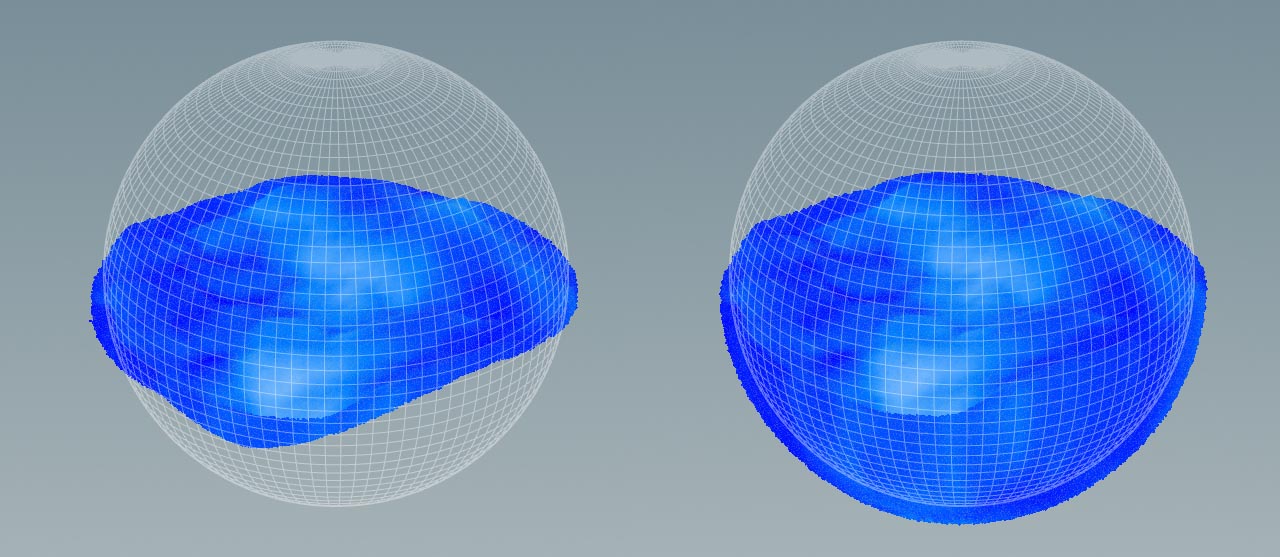Narrow band is an efficient method to speed up simulations, save resources, and optimize overall performance. The idea is to have particles only on the surface. This surface - the band - has a certain thickness, and everything below this surface is not represented through particles. In theory, scenes with and without narrow band, are identical. In real simulations this is not the case, but you get the same rough behavior.

Simulations with large particle counts will particularly profit from narrow band. The solver doesn’t have to process large amounts of particles, which are not necessary to represent the entire fluid. In scenes with small particle counts and an almost constant number of particles, narrow band can be turned off. Viscosity simulations, for example, tend to stay small, because they don’t need such a high level of detail. Here, the narrow band option can be turned off.
Note
In a standard SOP FLIP fluid simulation, the narrow band option is turned on.
Attribute-field pairs ¶
In a non-narrow-band simulation, all the information is on the voxels, and fields are rebuilt with each simulation. In narrow band situations this is not possible and the fields have to be maintained throughout the simulation. Attributes have to exist on the volume and the particles. Therefore, static attributes like id don’t work in narrow band, because particles are destroyed and new ones created.
To use attributes, it’s required to define so-called attribute-field pairs. In DOP FLIP fluids, the definition and handling of attribute-fields requires several steps. In SOP FLIP fluids, this process greatly improved, and attribute-field pairs are now properly maintained through the entire simulation network.Attribute-field pairs are directly created in the FLIP Container node.
Tip
For a complete workflow example, visit the Point variable density: multiple densities page.
In narrow band scenarios, particle attributes will bleed, because the background grid is kept during the simulation and the values blend over time.